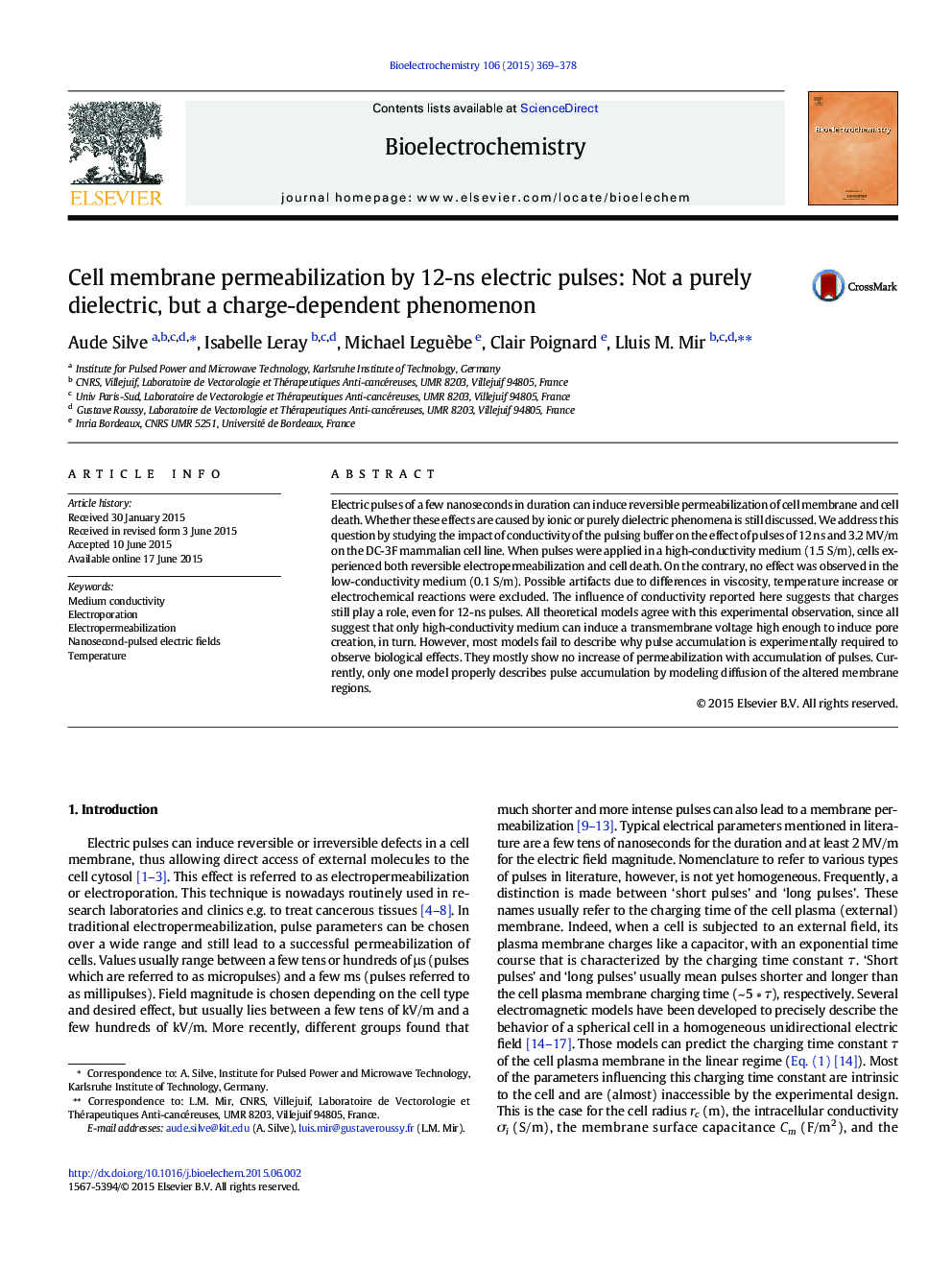| Article ID | Journal | Published Year | Pages | File Type |
|---|---|---|---|---|
| 1270747 | Bioelectrochemistry | 2015 | 10 Pages |
•External medium conductivity impacts electroporation efficiency.•Electroporation by 12-ns pulses is not a purely dielectric phenomenon.•Theoretical models predict impact of medium conductivity for one pulse.•Including lipids lateral diffusion in models accounts for pulse repetition effects.
Electric pulses of a few nanoseconds in duration can induce reversible permeabilization of cell membrane and cell death. Whether these effects are caused by ionic or purely dielectric phenomena is still discussed. We address this question by studying the impact of conductivity of the pulsing buffer on the effect of pulses of 12 ns and 3.2 MV/m on the DC-3F mammalian cell line. When pulses were applied in a high-conductivity medium (1.5 S/m), cells experienced both reversible electropermeabilization and cell death. On the contrary, no effect was observed in the low-conductivity medium (0.1 S/m). Possible artifacts due to differences in viscosity, temperature increase or electrochemical reactions were excluded. The influence of conductivity reported here suggests that charges still play a role, even for 12-ns pulses. All theoretical models agree with this experimental observation, since all suggest that only high-conductivity medium can induce a transmembrane voltage high enough to induce pore creation, in turn. However, most models fail to describe why pulse accumulation is experimentally required to observe biological effects. They mostly show no increase of permeabilization with accumulation of pulses. Currently, only one model properly describes pulse accumulation by modeling diffusion of the altered membrane regions.
